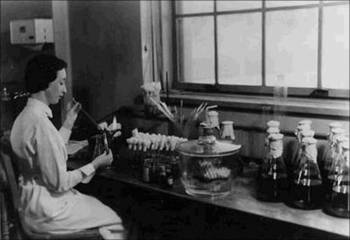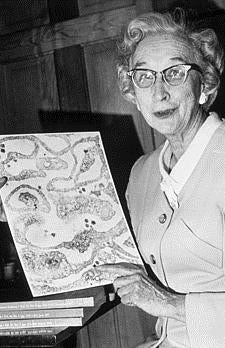Sarah Stewart Student Research Lecture Series

We provide an opportunity in the spirit of Dr. Stewart, for students to meet the best of our Georgetown Research World — where there continue to be miracles of discovery every day. It is this culture that brought the world the first artificial Heart valve by Dr. Huffnagel in 1951, the description of Homozygous Hemoglobin C disease in 1954 by Charlie Rath, the second site for American Hemodialysis and the advocacy effort that brought Medicare funding for dialysis for all Americans by George Shreiner, the birth of a true science of cardiac auscultation by Proctor Harvey. In addition recent science has brought the world the safe, non-sedating antihistamine, Allegra®, and in following up on Dr. Stewart’s effort, the development of the first polyoma-viral, HPV cancer vaccine by Dr. Dick Schlegel.
In addition, since 2006, we ask every student to develop the formal research skills by developing an Independent Scholarly Project. This lecture series will focus not only on our cutting edge research in Cancer, Neuroscience, but also in clinical and translational science across our Clinical Translational Science Award program as well as emerging Safety and Quality research in our shared MedStar Health System. The Sarah Stewart Lecturers are chosen by faculty and students for their exciting scientific work, for their tireless effort in mentoring students in research, and for their willingness to share this work with our student faculty research community.
History
Dr. Sarah Elizabeth Stewart (August 16, 1905 – November 27, 1976), a Mexican-American researcher who pioneered the field of viral oncology research. She was born on August 16, 1905, in Tecalitlán, Jalisco, Mexico.[1] She did her undergraduate work at the New Mexico State University graduating with a Bachelor’s of Science in 1927. She went on to earn a Master’s degree from the University of Massachusetts Amherst in 1930 and a PhD in microbiology from the University of Chicago in 1939. She came to the faculty at Georgetown where she taught microbiology at the School of medicine. She was encouraged to complete her MD degree and in 1949, she became the first woman to be awarded an MD Degree from Georgetown University School of Medicine.[2]

Following her graduation, she went to NIH to the lab of Dr. Bernice Eddy, where Stewart and Eddy developed an interest in researching viral links to cancer based on the pioneering research of Jonas Salk in developing a vaccine for the virus which caused polio. The Salk vaccine was probably contaminated with a virus — that proved to be simian virus form the Monkey kidney in which the Polio vaccine virus was grown. Stewart and Eddy were credited with discovering the first cancer causing, or Polyomavirus in 1953.[2]. Although it is controversial, despite the simultaneous work by Stewart and Eddy (SE Virus). Murine polyomavirus was credited as the first polyomavirus discovered by Ludwig Gross in 1953.[1] Stewart and Eddy were successful in growing the virus in 1958 and the SE (Stewart-Eddy) polyoma virus is named after them. Stewart was the first to successfully demonstrate that viruses causing cancer could be spread from animal to animal. [3] Stewart and Eddy were nominated several times without success for the Nobel Prize. Dr. Stewart returned to Georgetown to teach in 1971 and then retired to Florida where she ironically died of cancer at her home in New Smyrna Beach, Florida on November 27, 1976.References:
References:
- Wikipedia- Sarah Stewart, MD, PhD- February 2009
- Cancer Research, Sarah Stewart, Obituary, Volume 37, 4675
- Stanley, Autumn. Mothers and Daughters of Invention, Page 165. 1993, Rutgers University Press.
- Smith, J. Y. (1976-12-08). “Dr. Sarah Stewart, Cancer Researcher, Dies”. The Washington Post: p. C15.
Polyomavirus is the sole genus of viruses within the family Polyomaviridae. Subsequently, many polyomaviruses have been found to infect birds and mammals. Polyomaviruses have been extensively studied as tumor viruses in humans and animals, leading to fundamental insights into carcinogenesis, DNA replication and protein processing. The tumor suppressor molecule p53 was discovered, for example, as a cellular protein bound by the major oncoprotein (cancer-causing protein) T antigen made by Simian vacuolating virus 40 (SV40).
The avian polyomavirus sometimes referred to as the Budgerigar fledgling disease virus is a frequent cause of death among caged birds. Polyomaviruses are DNA-based (double-stranded DNA, ~5000 base pairs, circular genome), small (40-50 nanometers in diameter), and icosahedral in shape, and do not have a lipoprotein envelope. They are potentially oncogenic (tumor-causing); they often persist as latent infections in a host without causing disease, but may produce tumors in a host of a different species, or a host with an ineffective immune system. The name polyoma refers to the viruses’ ability to produce multiple (poly-) tumors (-oma).
The genus Polyomavirus used to be one of two genera within the now obsolete family Papovaviridae (the other genus being Papillomavirus which is now assigned to its own family Papillomaviridae). The name Papovaviridae derived from three abbreviations: Pa for Papillomavirus, Po for Polyomavirus, and Va for “vacuolating”.
Polyomaviruses are divided into three major clades (genetically-related groups):[2] Many of the known viruses do not fall into these clades and the taxonomy of this family is ongoing.
• Simian Virus 40 clade ( SV40, JC Polyoma virus, BK Polyoma Virus, SA12)
• Avian clade
• Murine polyomavirus clade
Past Sarah Stewart Lectures
January 28, 2016
Dr. John Marshall
September 24, 2015
Dr. Neil Weissman
February 12, 2015
Dr. Thomas Fishbein
October 30, 2014
Dr. Wolfgang Rennert
November 5, 2015
Dr. Peter Andrews
April 9, 2015
Dr. Daniel Lucey
November 20, 2014
Dr. Kathryn Sandberg
September 4, 2014
Dr. Seble Kassaye
